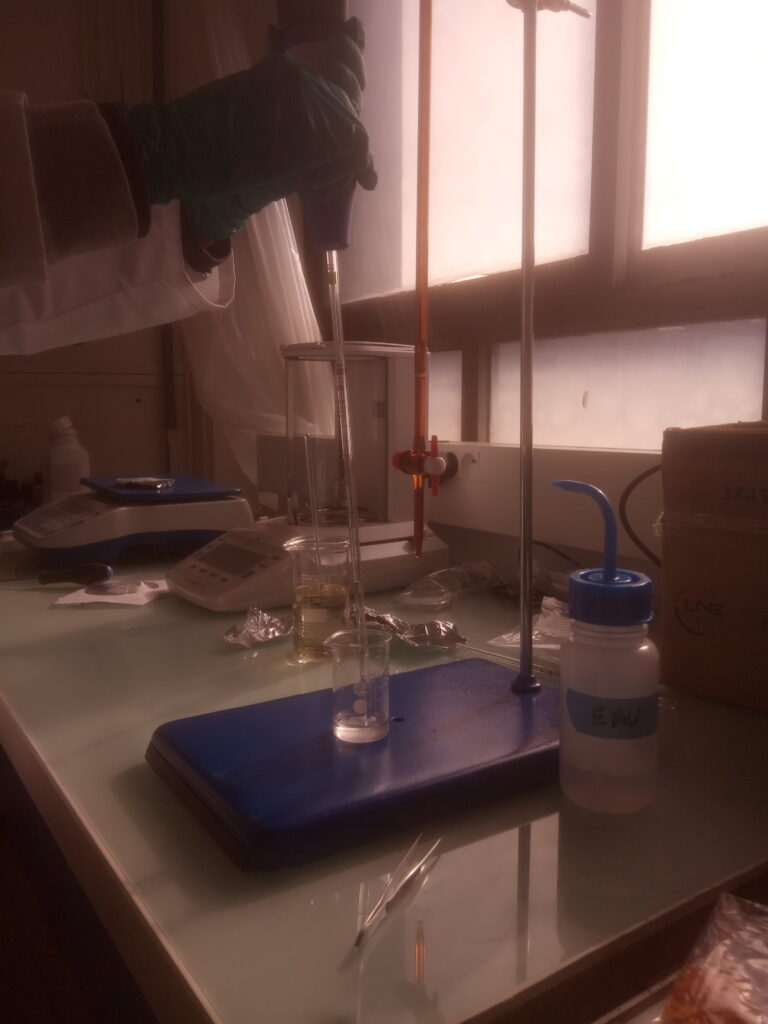PLASTINEST experiments to describe the vertical dynamics of microplastics in hyperturbid environments are coming up, so we have started to prepare the materials. These experiments will be part of the master project of Adeline Lemaire-Coqueugniot who has recently joined the PLASTINEST team.
In particular, we have selected a wide spectrum of microplastic particles that will participate in the experiments and we (Adeline, Alicia, Vania and Isabel) have measured their physical properties (size, density and settling velocity).
Microplastic density
Particle density was estimated using a variation of the titration method as in our previous studies (Jalón-Rojas et al., 2022). The particles were placed in a
test tube of distilled water and agitated to release all possible air bubbles. When the particle sank to the bottom, the initial distilled water solution was progressively densified by the dropwise addition of concentrated zinc chloride solution (ρ =
1700 kg/m3) using a burette. The procedure continued until the solution reached the density of the particle, and the particle rose and floated in the liquid for 1 min without rising or falling.
For each particle, a volume of 1 mL of solution was collected with an automatic pipet and weighed using a high-precision electronic balance to determine its density and therefore the density of the particle. This last step was repeated three times in
order to estimate the error associated with this method.

Settling velocity
Settling velocities were measured following the strategy used in Jalón-Rojas et al. (2022). We used a transparent polycarbonate cylindrical column, 1 m high and 19 cm in internal diameter, located at a steady room temperature. Particles were placed in the centre of the column approximately 1 cm below the water surface to avoid their
retention by surface tension.
The settling velocities of the different particles were calculated by measuring the time that a particle employs to move over a known distance of 20 cm in the vertical column using a high-resolution camera.

Laisser un commentaire
Vous devez vous connecter pour publier un commentaire.